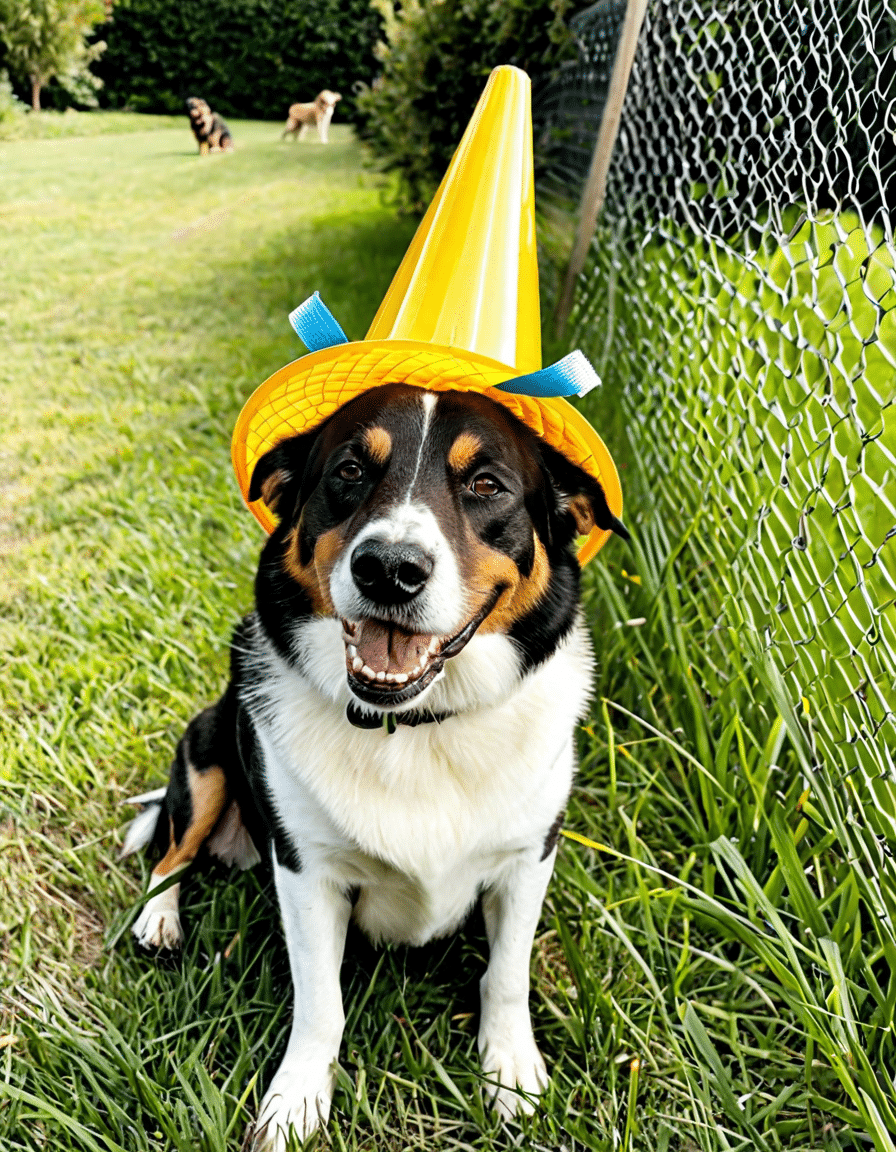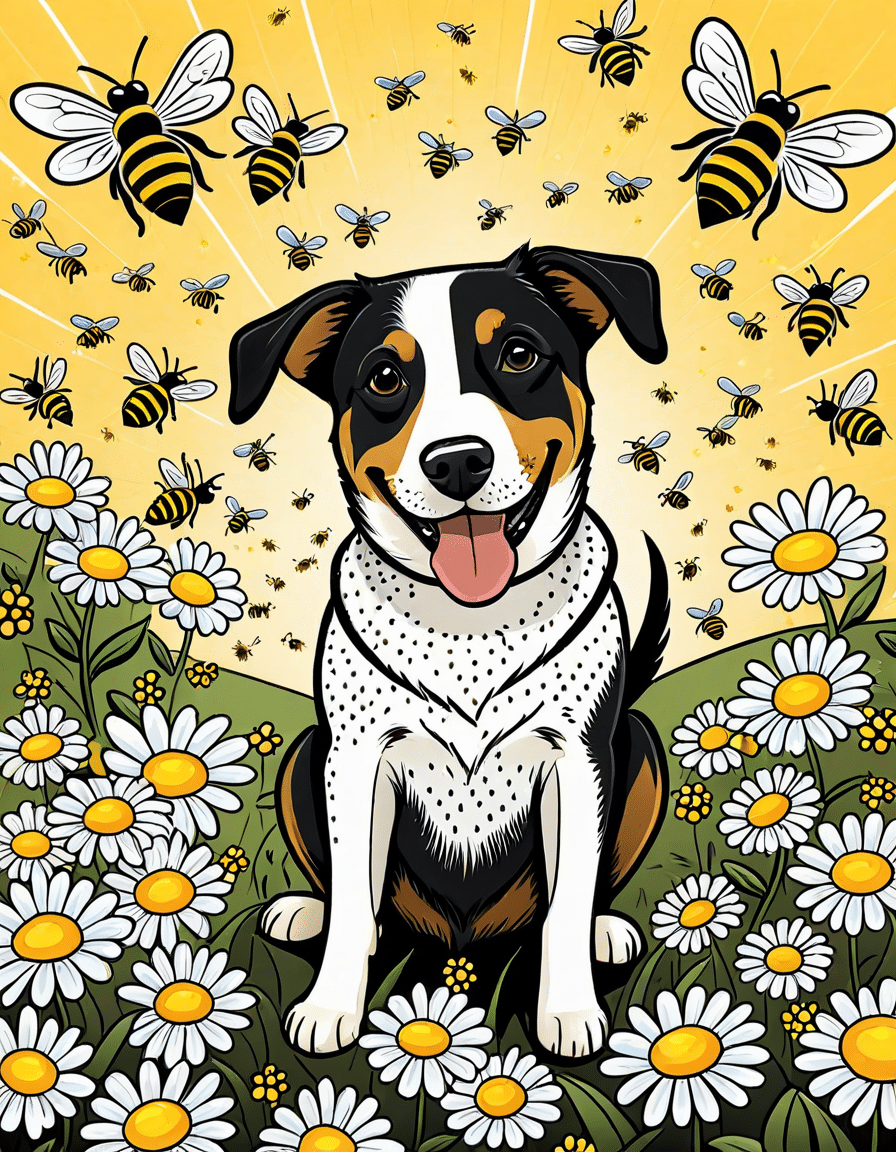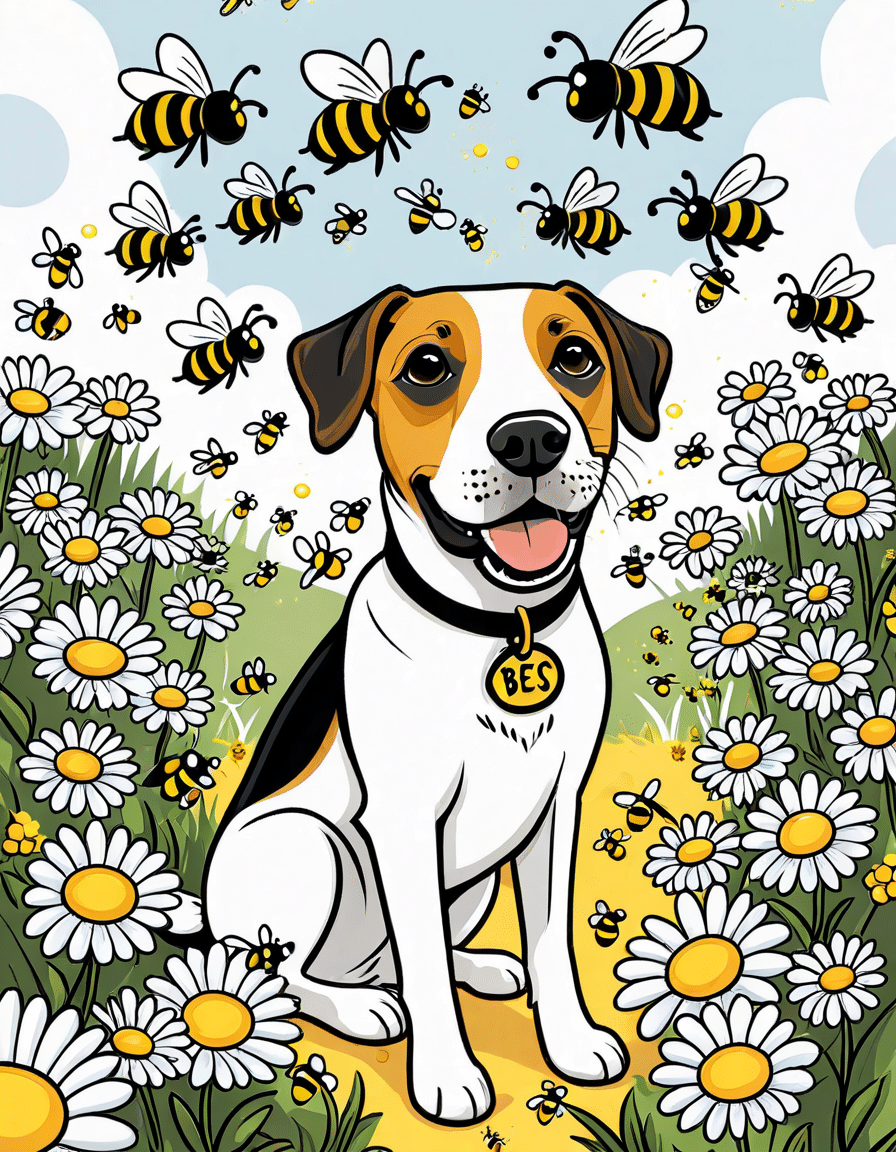Every dog owner has that moment of panic when they realize their pup is in a tussle with nature—a flower, a buzzing bee, or even a pesky hornet. Dogs stung by bees can face unexpected pain and discomfort. Not only could your furry friend suffer immediate consequences from a sting, but these instances can also escalate quickly, especially if alarm pheromones attract other bees. So, let’s dive into the ins and outs of caring for your beloved pet when they’ve had an unfortunate run-in with a bee.
1. Understanding the Risks of Dogs Stung by Bees
Dogs, driven by curiosity, naturally want to explore the world around them. Unfortunately, this sometimes leads to encounters with bees. Understanding a bee’s anatomy can help you grasp why stings can be more than just a minor inconvenience. When a honey bee stings, it releases alarm pheromones—chemical signals that can cause other bees nearby to become aggressive. This is troublesome for our four-legged companions; a simple encounter may turn into a swarm situation pretty quickly.
Moreover, certain environments are more prone to bee activity, especially areas where flowers bloom abundantly. If you’re out hiking or playing fetch in the park, your dog might think it’s fun to chase after a buzzing bee, unaware that they’re poking a hornet’s nest, so to speak! Being aware of your dog’s behavior is key.
To protect them, it’s critical you recognize their interest in buzzing bugs. If your dog tends to dart toward anything that flies, including bees, a proactive stance might just prevent an unfortunate sting.

2. Immediate Steps to Take When Your Dog is Stung
When your dog gets stung, staying calm is your first line of defense. Here’s a quick rundown of steps to take:
These steps can make a world of difference and can even save your pup’s day (and even life).
3. Recognizing Symptoms Post-Sting in Dogs
After your dog experiences a bee sting, it’s essential to be on the lookout for various symptoms. Besides immediate pain and swelling, your canine might display unusual behavior like whining or lethargy. Some dogs will favor the affected limb or area, which is a clear sign they’re in distress.
Serious allergic reactions can occur quickly, often within minutes. Knowing how to spot signs is crucial. Pay attention to symptoms like vomiting, diarrhea, or sudden aggression—these can indicate a severe reaction that requires urgent care.
Taking the time to monitor your dog closely during this challenging time can lead to swift action, which is vital to their recovery.

4. The Impact of Bee Stings on Other Pets: Cats Stung by Bees
Although we’re focusing largely on dogs stung by bees, let’s not forget about our feline friends! Cats can also face stings, even though they are usually more cautious around buzzing insects. If a cat does get stung, they, too, will demonstrate symptoms similar to dogs: localized swelling, pain, and potential allergic reactions.
Interestingly, stray cats in Buddhist temples often enjoy the freedom to roam, which can put them at risk for bee encounters, much like their canine counterparts. Even in a caring environment, these cats may land in trouble if they get too curious about the buzzing creatures around them.
Thus, it’s always essential for pet caregivers to be aware of their animals’ behaviors and the hazards that interact with them, even during seemingly innocent outdoor explorations.
5. Prevention Strategies for Bee Stings in Pets
Proactive measures can significantly decrease the risk of dogs stung by bees. Let’s explore some practical strategies you can implement:
Creating an awareness revolving around bee activities, coupled with these strategies, can lead to a safer outdoor experience for your pets.
6. Innovative Wrap-Up
So, caring for dogs stung by bees doesn’t just involve immediate action; it also means putting preventive measures into play. Knowledge is indeed your best friend in these situations. As pet owners, our job is to provide a nurturing environment, and that means understanding our pets’ surroundings and the hazards that come with them.
Instead of just seeing bees as pesky insects, consider their role in the ecosystem. With proper care and attention, we can protect our furry friends while they explore the wonders of nature. Whether it’s about keeping bees out of reach or acting fast when a sting occurs, being well-informed can truly make all the difference in ensuring that your pets remain healthy and happy.
Dogs Stung by Bees: Fun Trivia and Interesting Facts
Did You Know?
When dogs get stung by bees, it can be more than just a painful experience. Honeybees, known for their crucial role in pollination, can deliver a sting that causes an allergic reaction in some pups. Interestingly, honeybees are the same species responsible for that buzzing sound you’ll hear in the summer. Just imagine a dog hopping around like a kid in “Spy Kids All the Time in the World” after being stung—talk about a dramatic scene! The cast kept us entertained, but seeing your furry friend in distress is never a fun show.
Bee Awareness and Dog Reactions
Many people don’t realize that dogs can show symptoms of a bee sting similarly to how humans do. There might be swelling, itching, or even something as serious as difficulty breathing. But here’s a quirky tidbit: while dogs may react to the sting, they won’t flop around like a fish in panic (although, if your dog starts acting like that, you might want to check if it’s due to something else!). If you’re curious, find out “if you’re flopping like a fish what does that mean” to understand various animal behaviors better.
The Sweet Side of Bees
On a lighter note, honey, derived from these buzzing insects, has its benefits. It’s often noted for its healing properties. Just think how Fozzie Bear would react if he got a taste—probably a mix of laughter and surprise! And here’s a fun fact about bees: they pack all their pollinated goodies into something akin to little puffs that help propagate the flowers in your garden, a friendly reminder of nature’s wonders amidst the buzz. What’s more, these same flowers attract dogs and other critters, inviting them to frolic—and oh boy, that could mean more stings.
So, remember to keep an eye on your pup during those sunny escapades! It’s easy to overlook the buzzing world around us, but just like winter bee hive wraps can protect hives from cold, knowing how to care for dogs stung by bees is essential for their well-being. Now armed with these fun facts, you’re ready to enjoy the outdoors with your dog, bee stings and all!



![[fun dog]Dog with a swollen face after a bee sting](https://www.petsdig.com/wp-content/cache/flying-press/c944d27d09e8ff3de609af0b3d477cd4.jpg)


